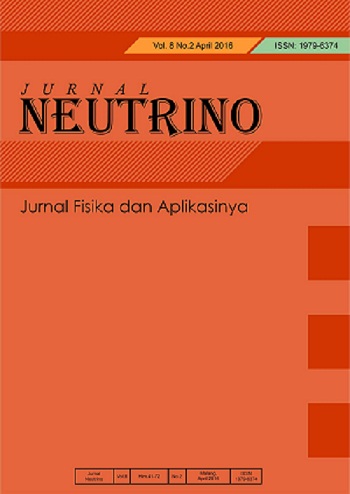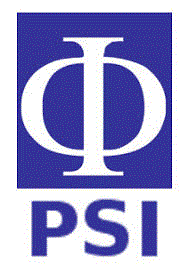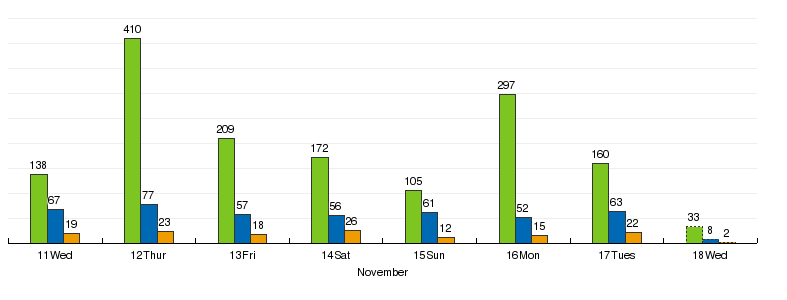THE EFFECT OF PH AND CALCINATION TEMPERATURE ON THE ZrO2 PHASE FORMATION FROM NATURAL ZIRCON SAND OF KERENG PANGI
Abstract
In this research ZrO2 has been synthesized from Kereng Pangi zircon sand in Central Kalimantan through alkali fusion-coprecipitation method. Firstly, zircon sand (ZrSiO4) was purified to reduce impurities by magnetic separation, cleaned using an ultrasonic cleaner, soaked/leached with HCl 2 M for 12 hours and leached with HCl at 60 ºC for 3 hours. Secondly, alkali fusion was done with KOH as an alkali. This product was then washed by water and dried before leached with HCl 30% at 90 ºC for 30 minutes to precipitate and seperate Silica from Zircon. ZrO2 filtrate (ZrOCl2) precipitated with NH4OH at pH 4, pH 7, and pH 10 forms Zr(OH)4 gel. Zr(OH)4 gel was dried and characterized by DTA-TGA, which was then followed by calcination based on DTA TGA results at temperature ranges of 550 ºC - 700 ºC to produce ZrO2. XRD results show that single tetragonal phase of ZrO2 is formed in all variations of pH precipitation and calcination temperature. An analysis using MAUD software show that crystal size reduces as the increase in precipitation of pH. The crystal size results are 110 nm, 66 nm and 48 nm at pH 4, pH 7 dan pH 10 at 700 ºC, respectively. Moreover, XRF results show that ZrO2 with purity is at around 95.8 % at pH 4 and 96.3 % at pH 7 and pH 10.
Keywords
Full Text:
PDFReferences
Yamagata C, Andrade JB, Ussui V, Lima D, Batista N, Paschoal JOA. High Purity Zirconia and Silica Powders via Wet Process: Alkali Fusion of Zircon Sand [Internet]. Materials Science Forum. 2008 [cited 2020 Oct 15]. Available from: https://www.scientific.net/MSF.591-593.771
Habib meedm. A novel method for processing of Bangladeshi zircon. Hydrometallurgy [Internet]. [cited 2020 Oct 15]; Available from: https://www.academia.edu/27772812/A _novel_method_for_processing_of_Bangladeshi_zircon.
Priyono, slamet. Pemurnian Serbuk Zirkonia dari Zirkon [Internet]. 2012 [cited 2020 Oct 15]. Available from: http://lipi.go.id/publikasi/Pemurnian-Serbuk-Zirkonia-dari Zirkon/8285.
Huang H-J, Wang M-C. The phase formation and stability of tetragonal ZrO2 prepared in a silica bath. Ceram Int. 2013;2(39):1729–39.
Sudjoko D, Triyono T. peningkatan kualitas zirkonia hasil olah pasir zirkon. Ganendra. 2008 Jan;11(1):11–6.
Kurapova O, Konakov V. Phase evolution in zirconia based systems [Internet]. undefined. 2014 [cited 2020 Oct 15]. Available from: /paper/Phase-evolution-in-zirconia-based-systems-Kurapova-Konakov.
Masoodiyeh. F, J. Zirconia nanoparticle synthesis in sub and supercritical water particle morphology and chemical equilibria | Request PDF [Internet]. ResearchGate. 2015 [cited 2020 Oct 14]. Available from: https://www.researchgate.net/publication/280714158_Zirconia_nanoparticle_synthesis_in_sub_and_supercritical_water_-_particle_morphology_and_chemical_equilibria.
Ran liu, et al. Analysis of water leaching and transition processes in zirconium oxychloride octahydrate production. Ceram Int. 2014 Jan 1;40(1):1431–8.
S. Shukla and S. Seal. Mechanisms of Room Temperature Metastable Tetragonal Phase Stabilisation in Zirconia - Thermal Spray Society [Internet]. 2015 [cited 2020 Oct 15]. Available from: https://www.asminternational.org/web/tss/technical-resources/-/journal_content/56/10192/IMR5001P045/periodical-article.
Ren, HaiSheng. The structural phase transition and elastic properties of zirconia under high pressure from first-principles calculations. Solid State Sci. 2011 May 1;13(5):938–43.
DOI: https://doi.org/10.18860/neu.v13i2.10507
Refbacks
- There are currently no refbacks.
Copyright (c) 2021 Mohammad Abdullah, Triwikantoro Triwikantoro, Chairatul Umamah, Herman Jufri Andi

This work is licensed under a Creative Commons Attribution-NonCommercial-ShareAlike 4.0 International License.
Published By:
Program Studi Fisika Fakultas Sains dan Teknologi Universitas Islam Negeri (UIN) Maulana Malik Ibrahim Malang, Indonesia
B.J. Habibie 2nd Floor
Jl. Gajayana No.50 Malang 65144
Telp./Fax.: (0341) 558933
Email: neutrino@uin-malang.ac.id
This work is licensed under a Creative Commons Attribution-NonCommercial-ShareAlike 4.0 International License
View My Stats










